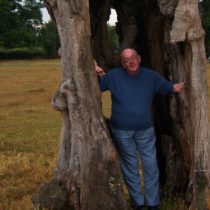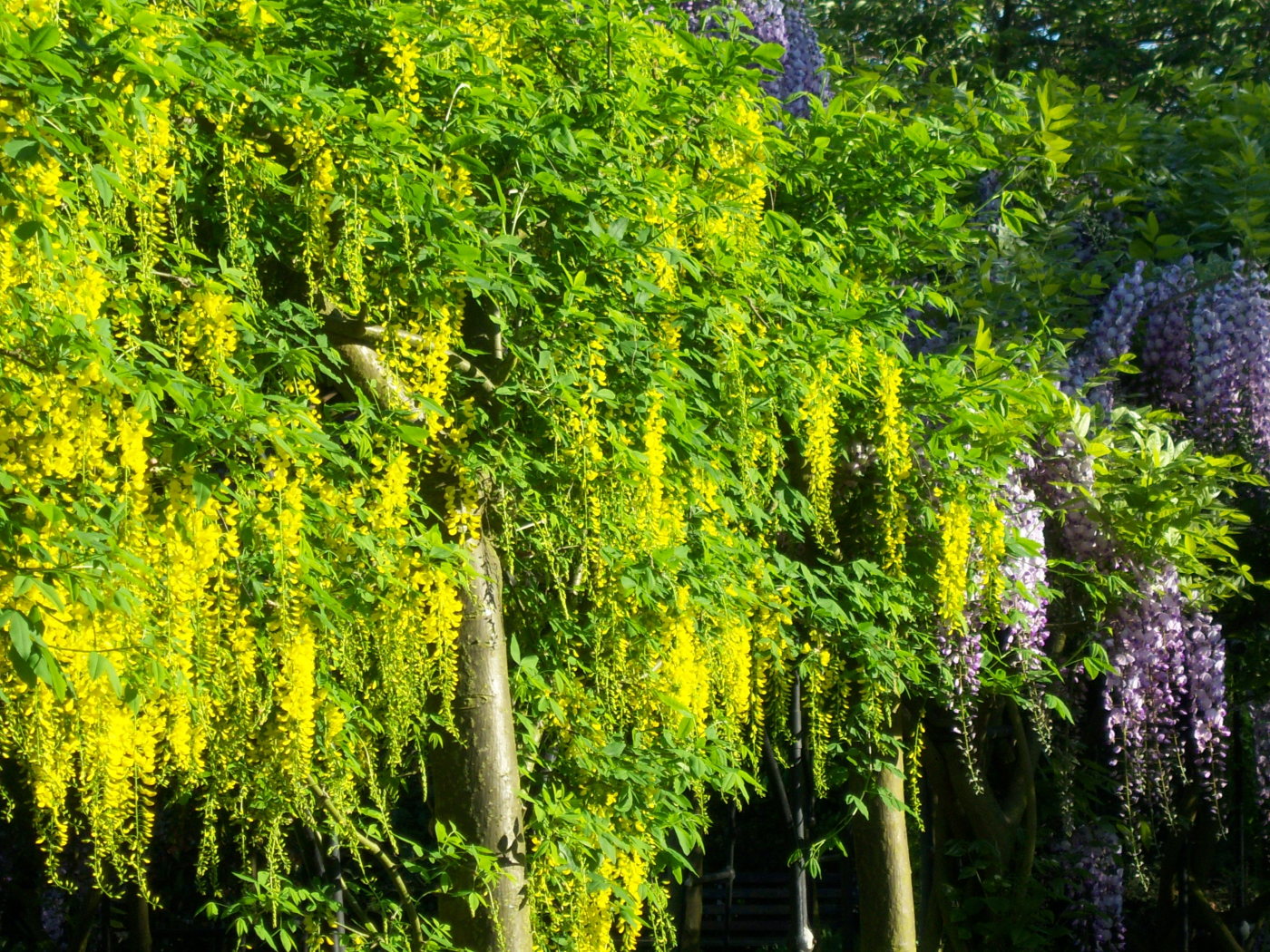Landscape Architecture for Landscape Architects › Forums › PLANTS & HORTICULTURE › Pro and Cons of having plants in building
- This topic has 1 reply, 3 voices, and was last updated 16 years, 10 months ago by
 Les Ballard.
Les Ballard.
-
AuthorPosts
-
October 13, 2008 at 6:21 pm #176291
 Tatiana JonesParticipant
Tatiana JonesParticipantI’ve seen a title “Bringing Nature Indoors: The Myths & Realities of Plants in Buildings”, but only registered users of that sites could read an article.
I do not want to be “registered everywhere” person, and I know about “pros” of having plants in the buildings. Can someone share “cons”?
I need this for my design. Thanks.
TatianaOctober 15, 2008 at 12:22 am #176296 Les BallardParticipant
Les BallardParticipantThe photo is a metal frame in a walled garden to what was a priory, in a park. It holds wisteria and laburnum accessable to the public including children. Folk these days do not know, children not being taught, that a few of the pea in a pod-like laburnum seeds will kill. The hanging flowers can at least be clipped above the height that small children can easily reach but some education would be helpful here in my opinion.
==========================================================================================
Plants get abused with coffee grounds and cigarette ends and, generally, are not openly favoured by individuals, though people enjoy the attributes of being made happier, healthier, less depressed and more active by virtue of the oxygen output. Overall, the pros are wanted by employers not employees, afficianados not attendants. However, there are now watering systems, baffles to stop access to the soil, you can set up ionisers, misters, heaters and cooling draughts as necessary. More thought about worms and other wildlife can help in larger areas, with a tap to draw off liquid fertiliser to use elsewhere. This involves adding organic matter for worms to eat. It is even possible to pipe gas to a collector, to burn, or to a vent. It is worth considering that one tree is an organism but 5 trees are also a single multi organism, with roots meeting underground. One tree will help support another. Soil from native areas will contain fungi at the various levels to help supply nutrients to the tree roots and so the fungi also need minerals and nutrients to break down for themselves and to pass to the trees. These range from truffles to things further down you never see, even when the tree is dead and the fungi has invaded the trunk through the tree root hairs that are now no longer sucking up the moisture. This cessation is, of course, what prompts the fungus to invade and explains why a tree can be dead a year before the invading fungi push up – usually – their fruiting bodies (mushrooms and toadstools). All of the gases, wildlife and so on help to create a more naturalistic microenvironment, without our currently being able to say precisely how all the factors may combine to help us. It is worth remembering that the life cycle of some trees can be so complicated as to rely, for example, on a fungus spread by a specie of spider and some trees cannot now be grown in captivity – like brazil nut trees I believe. While it might be nice to have free brazil nuts in an office atrium, some people might prefer not to have the spiders and few would like the conglomerations of nuts falling on their heads (coconuts similarly though they fall at night mostly).
So, choose your plants, make the setup as good and labour free as you can but know as much as possible about what you are planting. Pretty aconites in a temporary bed at a dog show and grazed by contestants may, for example, kill millions of dollarsworth of prime breeding animals.
I was reminded about allergies by the other posting for which many thanks. This allows me to confirm that foliage beds may need occasional removal of all flower buds to avoid pollen, seeds, bugs, etc. It is only like clipping a privet hedge regularly this avoiding, mainly, a lot of very poisonous berries coming along. At the same time, planned for a healing environment, birch pollen may be used to help acclimatise patients. Such “bad” plants can, therefore, actually be in a brief and if only to put visiting sensitive folk at a disadvantage, in negotiations perhaps, just like giving guests
November 19, 2008 at 5:03 pm #176295 NikkaParticipant
NikkaParticipantHi Tatiana,
Pros: Plants soften the architecture, provided better air oxygen circulation, can direct path, can be a barrier, they simply make places aesthetically nicer and cooler.
Cons: If the plants are actually under the building line or there is minimal light that reaches the plants, it will be a big maintenance problem. I’ve experienced in my projects that some people though it is THAT easy to put planting areas in / inside buildings, when in fact, IT IS NOT. Usually, when the project is through and your plants don’t grow well, they will say that it is a design fault.
I’d rather not put greenery under building when I know that there’s not enough light that can reach it. It’s also helpful to know where the west and the east are — eastern sun would help a lot in the growth of your plants. You want to know a secret? 🙂 Plants in the hotel lobbies are actually being replaced at least every week. Airconditioning also makes condition worse for our beloved plants.
I hope this helps. 🙂
November 29, 2008 at 2:52 am #176294 Tatiana JonesParticipant
Tatiana JonesParticipantThank you all.
I see allergy, dust and maintenance can be big issues.
Tatiana.January 15, 2009 at 12:37 pm #176293 Les BallardParticipant
Les BallardParticipantYes Nikka you are right. However, planning buildings should include consideration of cardinal points and we certainly must, along with lattitude of course, while a good old fashioned light meter will help determine what will grow where. I do deplore the regularly changed palms in malls and plastic foliage in the fast food restaurant – something real and longer lasting should be possible along with self watering outdoor planting, if only a hanging basket or series of troughs. I may have said this before here but, a big mall near me planted oak trees (in tubs if you please) from Holland (meaning Estern Europe) that have a hormone imbalance resulting in uniform brown leaves in autumn that are not shed until spring. By the time the trees are old enough to get over the problem they will all be burnt and replaced by the same people that deal with the indoor plants – removing many to an environment where they may recover but it isn’t a good life for any plant. Anyway, vive au naturel!
Luv n Lite
Les BallardFebruary 5, 2009 at 4:38 am #176292 NikkaParticipant
NikkaParticipantThanks for the insight, Les!
-
AuthorPosts
- You must be logged in to reply to this topic.



